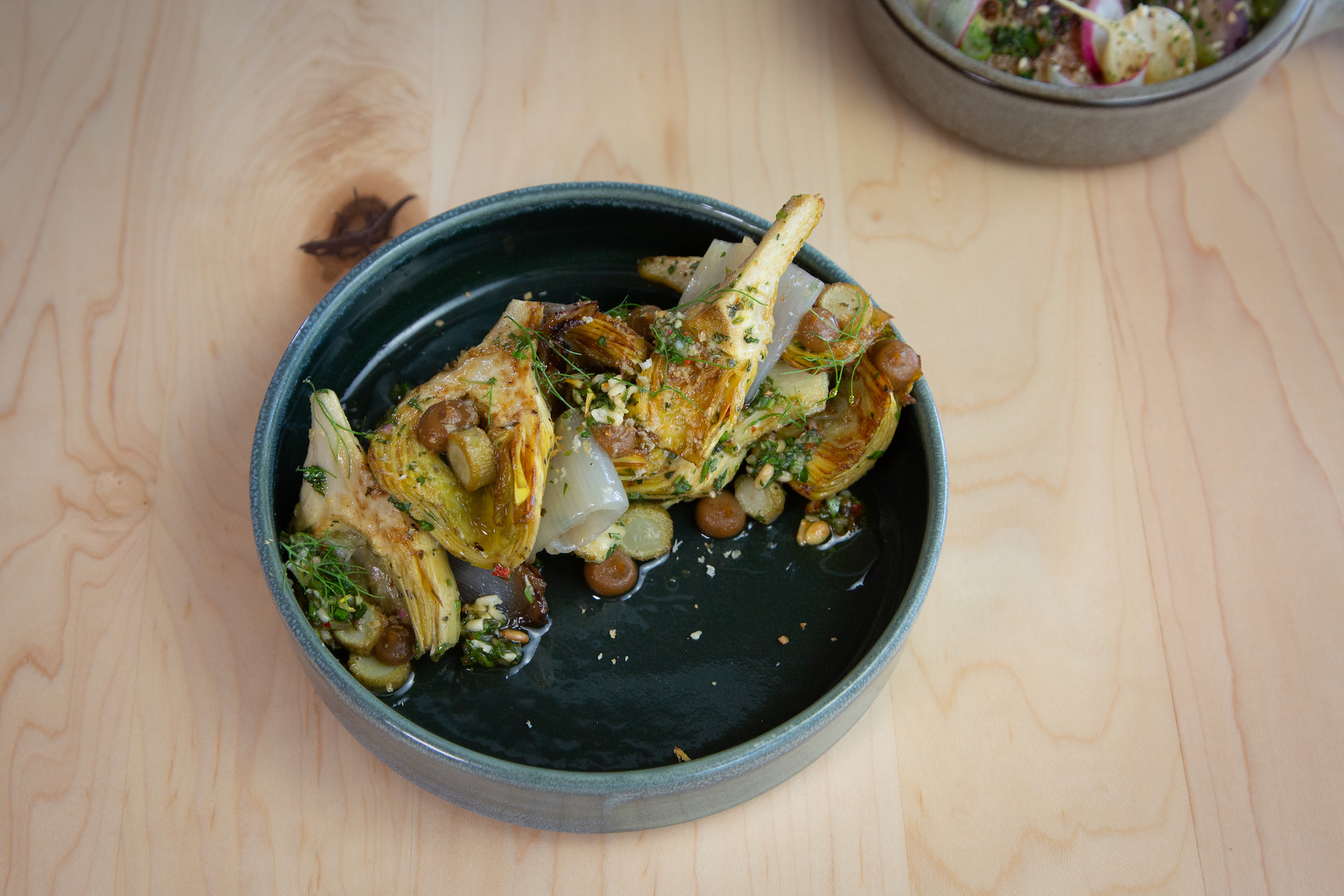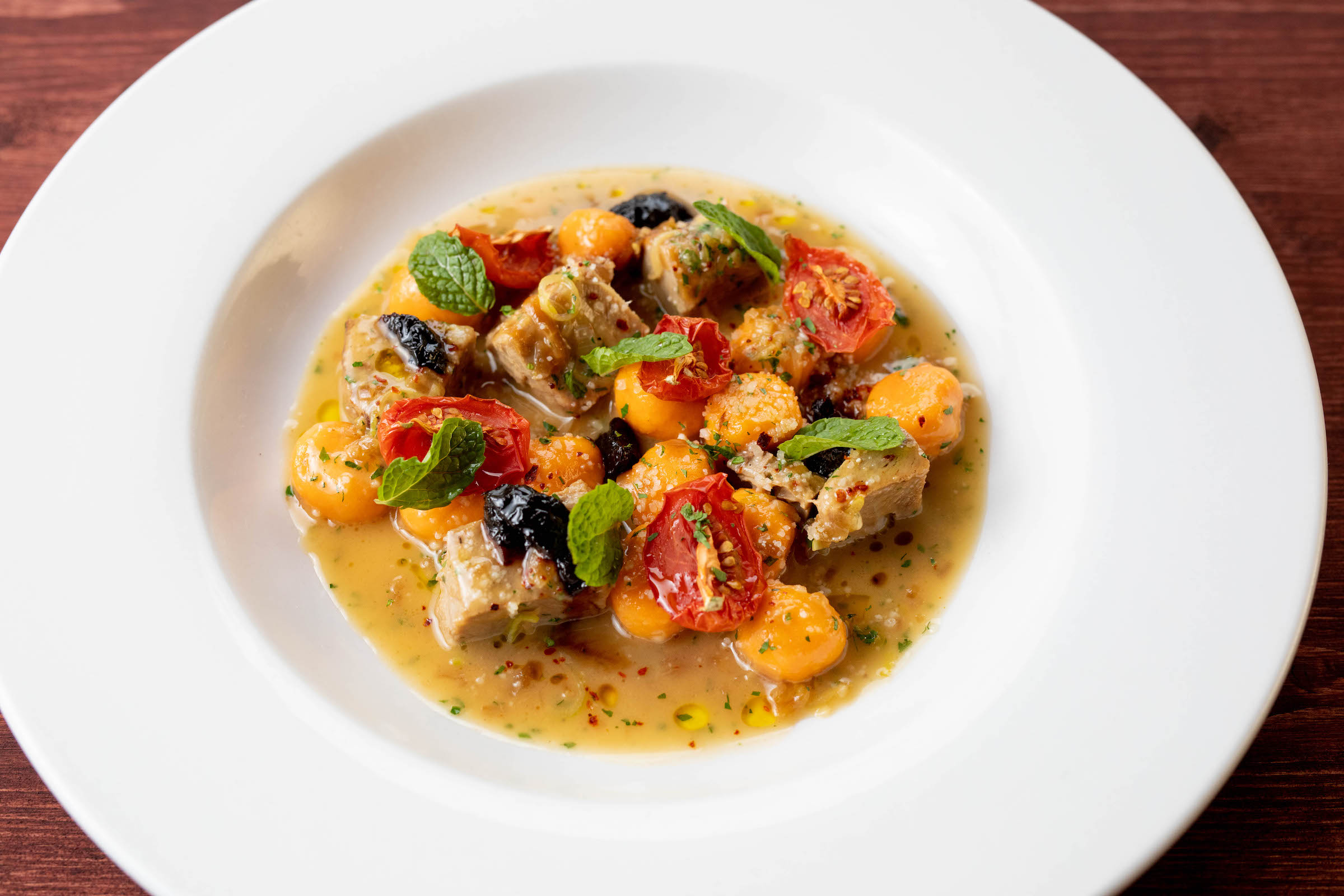By David M. Brown
We’d all be foraging if we didn’t have dependable grocery stores to find our foodstuffs. For thousands of years, Native Americans in Arizona have left pueblo, town, and village to pick from nature, not shelves and bins: mesquite pods, grapes, acorns, cholla buds, mushrooms, prickly pear pads, palo verde sprouts, and tepary beans.
Celebrated foragers, such as naturalist and author Steve ‘Wildman’ Brill, have disseminated the many advantages of the method to a worldwide audience.
“Foraging involves sourcing wild, locally grown plants, herbs, and other edibles to infuse unique flavors into dishes,” explains Phoenix native, Rochelle Daniel, chef and co-owner at the James Beard-nominated Atria restaurant in Flagstaff.

The activity, by chefs and consumers, saves money for family budgets and the economy. It’s energy smart — reducing gas consumption for delivery trucks — and it’s healthful, offering food that hasn’t been manipulated in one way or another.
Another positive is independence, both personal and political.
“Everything we can do to localize the economy and food system promotes self-reliance,” says Kimber Lanning, who began Local First Arizona 20 years ago while also helping rebirth the Roosevelt Row area in Downtown Phoenix.
“It’s an indigenous way of thinking about foods,” she adds. “We are less vulnerable to externalities and the volatility of markets. Most of us don’t recognize the danger of having our food system supply controlled by a handful of monopolistic companies. The more we can diversify our supply chain, the more secure we will be.”
In addition to supporting nearby food sourcing, Local First Arizona also promotes sustainability, helping Valley farms grow less-thirsty crops than traditional guzzlers such as cotton and alfalfa.
In this spirit of self-reliance, Lanning encourages everyone to be mindful of where their food is coming from, whether sourced from farmers markets or big-time stores.
“Don’t be afraid to ask,” she says.
Arizona’s Foragers
Arizona Native American foragers include Maria Parra Cano, whose Sana Sana Foods offers ancestral items; and White Mountain Apache chef Nephi Craig, who founded the Native American Culinary Association, which supports research, development and refinement of Native cuisine. He also works with the Rainbow Treatment center, which promotes addiction recovery through connecting with the land and ancestral knowledge. He and his staff at the James Beard-nominated Café Gozhóó forage for many menu items near his Whiteriver home in Northern Arizona.
Chef Brett Vibber of the James Beard-nominated Table at Junipine in Sedona, and chef Dustin Cristofolo of South Phoenix’s Quiessence are other well-known foragers in the restaurant community. And although foraging takes quite a bit of skill to know what is
safe to consume, with a bit of research and practice, regular homecooks may become skilled at foraging, as well. A recent article from The Arizona Republic describes how some Valley residents of Cambodian ancestry actually forage Asian clams growing in the Verde River and other Arizona waterways.

The Benefits of Foraging
“Foraging enhances culinary creativity, connects chefs with local ecosystems, and contributes to sustainable dining practices,” says Daniel, also noting the ethical considerations associated with foraging.
Daniel’s Atria is a modern American restaurant that showcases the wide variety of farm fresh foods grown across Northern Arizona, melding a variety of flavors with innovative techniques and presentation.
“We infuse international flavors, drawing inspiration from cuisines all around the world,”
she says. “This fusion reflects the multicultural fabric of American society and creates dishes that are both familiar and novel.”
A graduate of the Scottsdale Culinary Institute, Daniel has shown great skill with various cuisines throughout her career. She led the kitchen as executive chef of L’Auberge Resort in Sedona, as well as Fat Ox in Scottsdale before branching out on her own to open Atria in 2021.
She has appeared on the Food Network; was a 2023 Foodist Awards Top Chef; voted the Valley’s “Best Sous Chef” by AZcentral.com; and was inducted into the Arizona Culinary Hall of Fame in 2017.
Daniel and her staff forage before work, going into the woods in Flagstaff or along Oak Creek Canyon to see what’s in store. They’re usually looking for spruce, mushrooms, nettles, creek cress, sunflowers, berries, bitter greens, and sorrel. Foraging allows her to blend nature’s bounty with gastronomic creativity, embodying a return to nature’s pantry.
“The act of searching for ingredients in forests, fields, and coastlines invites a sense of adventure and explorations, sparking culinary innovation,” she adds. By incorporating uncommon elements such as wild mushrooms, herbs, and berries, chefs can craft menus that celebrate the ever-changing seasons, resulting in a “dynamic and engaging dining experience.”
Sustainability, a deep connection to the land, and a revival of traditional knowledge are other benefits of foraging.
“Engaging directly with the landscape heightens appreciation for local ecosystems and encourages chefs to be mindful of nature’s delicate balance,” she says. “Building relationships with local farmers and indigenous communities can also strengthen the
culinary community’s ties to the region.”
Christofolo has been deeply connected with his local community for two decades, along with his mother, Pat, who owns The Farm at South Mountain, which is home to Quiessence.
In 2003, he began in front-of-house management at Quiessence, honing his signature wine service. The following year, he completed the Culinary Institute of America Wine Program, guided by wine expert Karen MacNeil. With the Italian Culinary Academy, he traveled to New York City and Parma the following year, learning about the Italian city’s famous culinary heritage. Following were stays at the Farm Kitchen (2009), connecting with local farmers, bakers, and cheesemakers; and the House at Secret Garden (2010), where he further refined his management and leadership skills.
Since 2013, he has been building rural-spirited Quiessence into a “must” Valley fine-dining experience — something that earned him an invitation to cook at The James Beard House in 2016.
In addition to his duties at Quiessence, Cristofolo oversees fast-casual breakfast concept Morning Glory, as well as the Soil & Seed Garden — both also located at The Farm at South Mountain. This two-acre garden embodies his commitment to sourcing the freshest, most flavorful ingredients for his dishes, while also fostering sustainable practices and strengthening the connection between nature and the plate. Chef Cristofolo works with young growers who are raising pumpkins, sweet corn, cucumbers, beets, carrots, radishes, and micrograins for the restaurant and their own use.
Due to time constraints and his busy schedule, Cristofolo doesn’t forage as much as he once did, though he does take the time to round up some of his favorites, which include purslane growing wild on the property.
“It loves the desert heat and it’s a great garnish,” he says. Purslane is considered a “volunteer plant” and is high in potassium — which regulates blood pressure and lowers the risk of stroke — and magnesium, which stimulates nerve cell communication, muscle contraction, and helps maintain normal heart rhythm. He also travels to Flagstaff for lobster mushrooms, which he prepares on a wood burning grill, then spritzes them with sherry and serves them with penne pasta. And, once a year during mulberry season, he sources the juicy berries from within his own neighborhood.
“Everyone should be mindful of what is around their area,” he says. “Every year I forage the neighborhood trees quickly because the mulberry season is only about three weeks.”
Mulberries are great sources of iron, vitamin C, and other compounds that may help reduce cholesterol, blood sugar, and cancer risk.
Each summer, he crosses 32nd Street and knocks on the door of Univision, the Spanish-language TV station.
“Can I collect your prickly pears?” he asks.
He then cleans the fruit and uses it for sauces on ice creams and sorbets at Quiessence.
“You’re never going to get that kind of flavor from the stores,” he says.
Read more Savor articles from Green Living Magazine.
Header photo: Courtesy of Quiessence.





